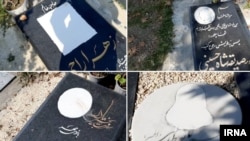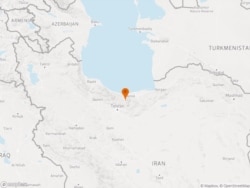
A Belarusian-American political strategist whose detention angered the United States has left Belarus.
Vitali Shkliarov’s freedom on October 27 comes days after U.S. Secretary of State Mike Pompeo demanded his "full release and immediate departure" in a phone call with Belarusian strongman Alyaksandr Lukashenka.
Shkliarov’s lawyer, Anton Hashynski, confirmed to RFE/RL that his client has left the country.
"The fact that the permission to leave was granted is certainly a result of Pompeo's call,” Hashynski said.
The lawyer said his client was still under investigation in Belarus and he would likely return because of his ailing mother.
Shkliarov, who worked on the campaigns of former U.S. President Barack Obama and Senator Bernie Sanders, was arrested on July 29, less than two weeks before the country's August 9 presidential election.
Restrictions on the political strategist were loosened last week, requiring him stay in Minsk instead of being confined to house arrest. He had previously been in prison and suffered health problems, including contracting COVID-19.
Shkliarov was visiting his parents on the trip, but law enforcement officials have asserted he was trying to assist blogger Syarhey Tsikhanouski register as a candidate in the election.
Tsikhanouski himself was detained prior to the election. His wife, Svyatlana Tsikhanouskaya, then stood in his place and has since become a leading Belarusian opposition figure.
The official results of the presidential election that handed victory to Lukashenka, who has been in power since 1994, have sparked mass protests, with Tsikhanouskaya’s supporters and opposition figures claiming she won the vote.
The European Union and the United States have refused to recognize Lukashenka as the legitimate ruler of Belarus, characterizing the election as fraudulent.







